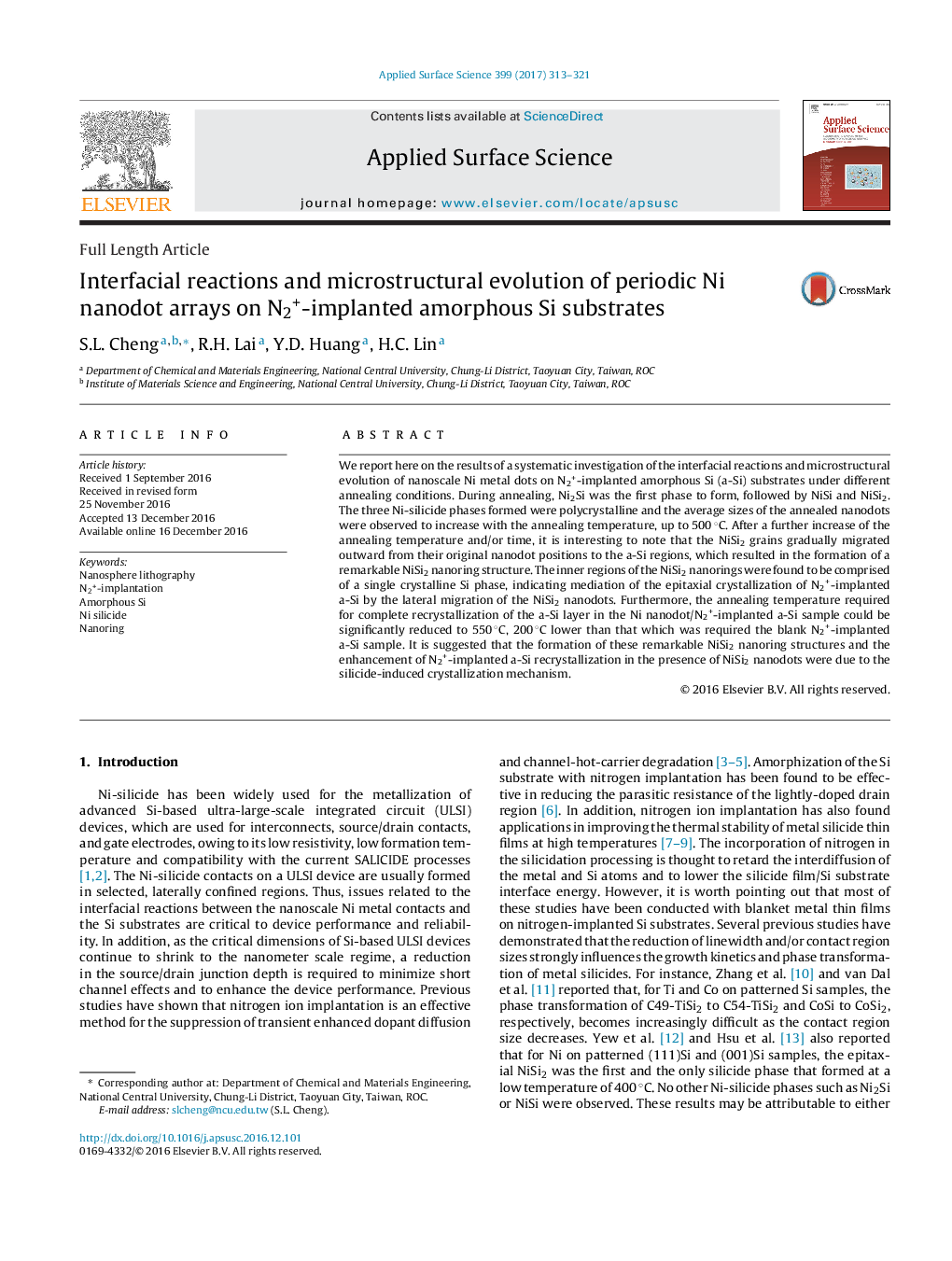| Article ID | Journal | Published Year | Pages | File Type |
|---|---|---|---|---|
| 5351060 | Applied Surface Science | 2017 | 9 Pages |
Abstract
We report here on the results of a systematic investigation of the interfacial reactions and microstructural evolution of nanoscale Ni metal dots on N2+-implanted amorphous Si (a-Si) substrates under different annealing conditions. During annealing, Ni2Si was the first phase to form, followed by NiSi and NiSi2. The three Ni-silicide phases formed were polycrystalline and the average sizes of the annealed nanodots were observed to increase with the annealing temperature, up to 500 °C. After a further increase of the annealing temperature and/or time, it is interesting to note that the NiSi2 grains gradually migrated outward from their original nanodot positions to the a-Si regions, which resulted in the formation of a remarkable NiSi2 nanoring structure. The inner regions of the NiSi2 nanorings were found to be comprised of a single crystalline Si phase, indicating mediation of the epitaxial crystallization of N2+-implanted a-Si by the lateral migration of the NiSi2 nanodots. Furthermore, the annealing temperature required for complete recrystallization of the a-Si layer in the Ni nanodot/N2+-implanted a-Si sample could be significantly reduced to 550 °C, 200 °C lower than that which was required the blank N2+-implanted a-Si sample. It is suggested that the formation of these remarkable NiSi2 nanoring structures and the enhancement of N2+-implanted a-Si recrystallization in the presence of NiSi2 nanodots were due to the silicide-induced crystallization mechanism.
Related Topics
Physical Sciences and Engineering
Chemistry
Physical and Theoretical Chemistry
Authors
S.L. Cheng, R.H. Lai, Y.D. Huang, H.C. Lin,
